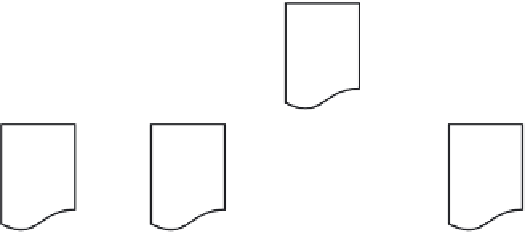Database Reference
In-Depth Information
Local Linking
Ontology
External User
Ontology
Main Local
Ontology
External Source
Ontology
FIGURE 10.11
Modularizing ontologies to reduce unnecessary reuse.
equivalence statements between the two main ontologies. (This has parallels with
Linked Data Linksets described in Section 7.6.) A third party wishing to use only
the Merean Nature ontology can now do so as it only has to refer to the main Merean
Nature ontology. If it does also want to use the Merea Maps ontology, it can do so by
using the linking ontology.
Of course, another case where it may be sensible to have local classes is when two
preexisting ontologies are linked, so dropping local classes in favor of the external
ones is not cost effective.
10.6
SUMMARY
This chapter has established the basic principles of constructing a geographic ontol-
ogy and has shown how these can be used to aid data integration. A number of meth-
odologies exist to guide the construction of an ontology; almost all of the emphasis
is placed on the importance of establishing a well-defined scope and purpose for
the ontology that helps to guide the author. Most of these methodologies also stress
the importance of establishing competency questions early on that can be used to
test the correctness, completeness, coverage, and interlinking of the ontology. The
construction process itself comprises iterative phases that involve the development
of a lexicon and glossary that then helps guide the description of the classes and
properties of the ontology. To those not familiar with the authoring of an ontology,
the Open World Assumption may require a little acclimatization, as will the fact
that properties can be specialized. The geographic domain itself offers the ontology
author a number of challenges. Ontologies are well suited to expressing network
topology and mereological relations, and reusable modeling patterns also begin to
emerge where features are described in terms of their physical components, function,
or land cover. However, not all geographical knowledge can be fully expressed in
DL, so an understanding of the limitations of OWL is important.
In the next and inal chapter, we present a summary of the topic, discuss what
may be on the horizon for GI as the Semantic Web develops, and emphasize for a
last time the most important aspects of Linked Data and the Semantic Web when
applied to GI.






